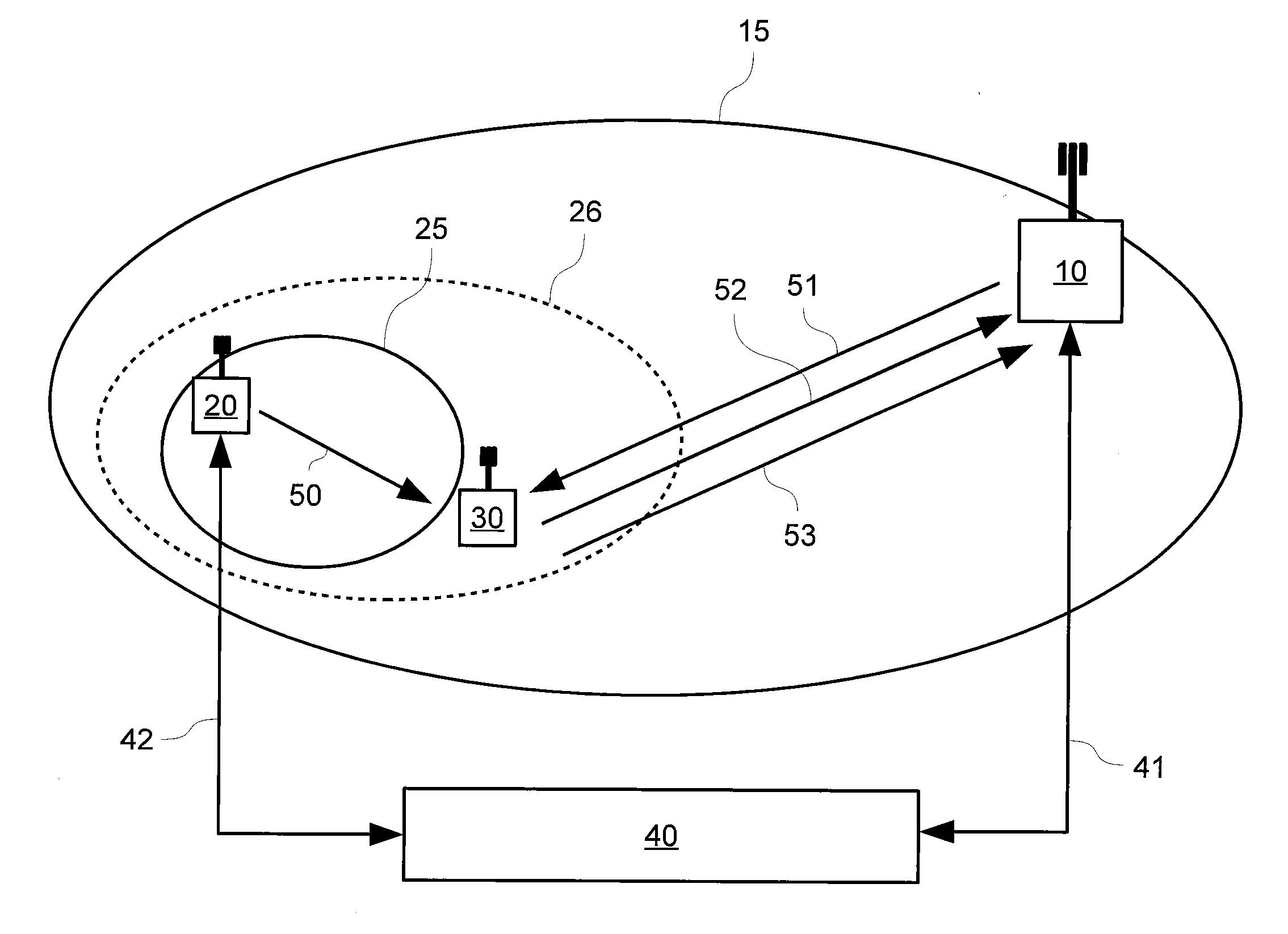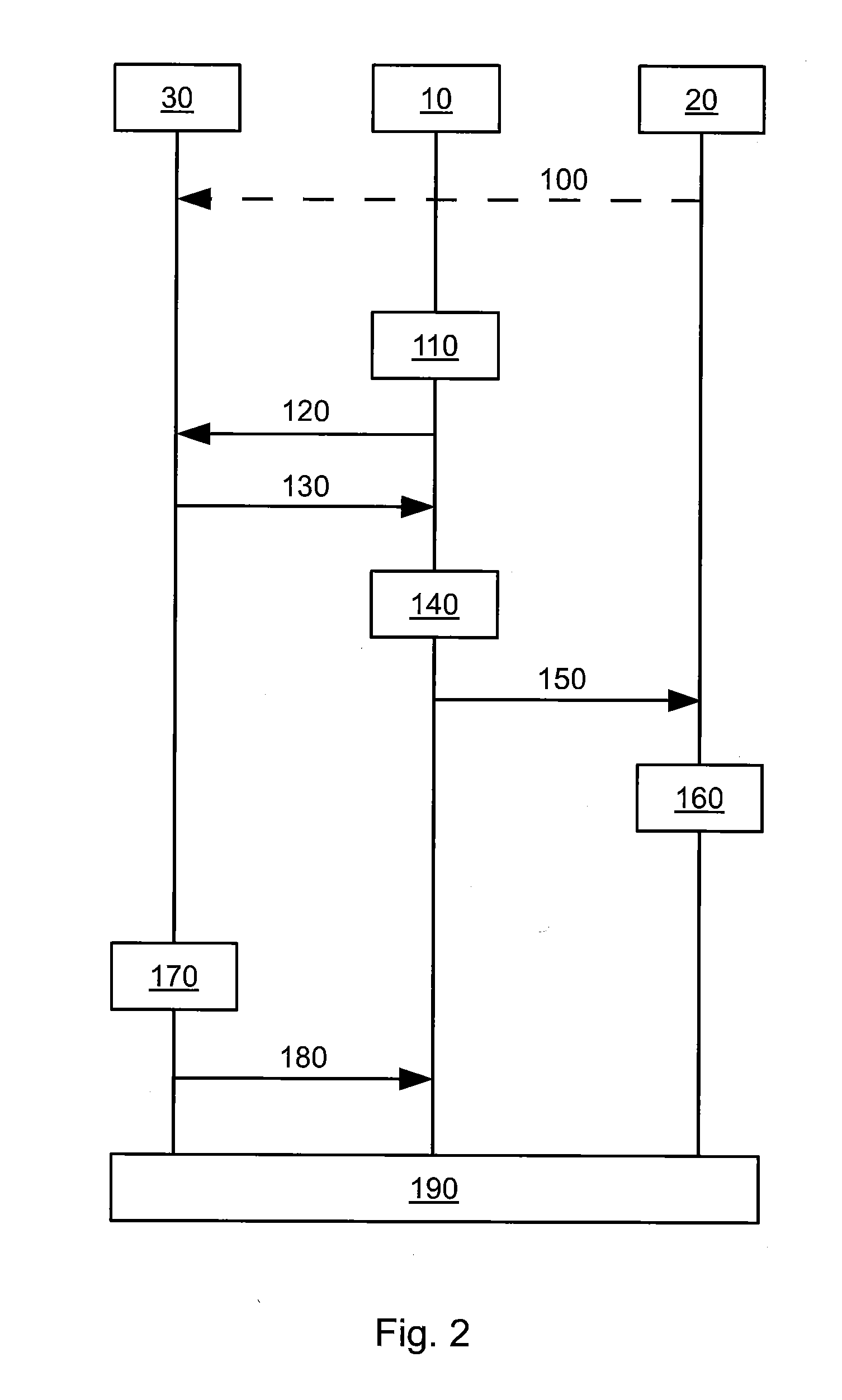Cellular network load balancing
a cellular network and load balancing technology, applied in the direction of network traffic/resource management, network topologies, electrical devices, etc., can solve the problems of unplanned or restricted access bases, channels that are difficult to identify or not exist, and achieve the effect of increasing the transmission power of downlink, reducing the load on the first base station, and increasing the coverage area of the second base station
- Summary
- Abstract
- Description
- Claims
- Application Information
AI Technical Summary
Benefits of technology
Problems solved by technology
Method used
Image
Examples
first embodiment
[0036]Referring first to FIG. 1, there is shown a schematic illustration of a wireless cellular network, implementing the system described herein. The wireless cellular network comprises: an MBTS 10; an HBTS 20; a mobile station (or equivalently User Equipment, UE) 30; and core network 40. Although the term mobile station is used, this is to be understood as an equivalent to the term UE used in 3GPP documents.
[0037]The coverage area for the MBTS 10 is provided by macro coverage area 15 and the coverage area initially provided by HBTS 20 is shown as femtocell coverage area 25. The mobile station 30 becomes aware of the existence of the HBTS 20 because the HBTS 20 broadcasts “system information”50. The system information 50 comprises the global cell identity of the cell provided by the HBTS 20.
[0038]Moreover, the system information 50 may also comprise: a load indication; a Closed Subscriber Group (CSG) identity; and an indicator which allows the UE to determine the access mode type o...
second embodiment
[0061]In an alternative approach to the one described above, the SON load balancing algorithm can relieve congestion at the MBTS 10 by changing the handover related parameters for a mobile station 30 which has reported a PCI for the HBTS 20 by dedicated signalling. Referring to FIG. 3, there is shown a schematic illustration of a wireless cellular network, implementing the system described herein according to this approach. Where the same features are indicated in FIG. 3 as in FIG. 1, identical reference numerals are used.
[0062]In this approach, the mobile station 30 is encouraged to handover to the HBTS 20, thereby relieving congestion on the MBTS 10. In such approaches, the mobile station 30 being served by the MBTS 10 is usually on the edge of the femtocell coverage area 25 that is at least partially within the macrocell coverage area 15.
[0063]The MBTS 10 transmits a first instruction 201. This is essentially the same as the first instruction 51 described with reference to FIG. 1...
PUM
 Login to View More
Login to View More Abstract
Description
Claims
Application Information
 Login to View More
Login to View More - R&D
- Intellectual Property
- Life Sciences
- Materials
- Tech Scout
- Unparalleled Data Quality
- Higher Quality Content
- 60% Fewer Hallucinations
Browse by: Latest US Patents, China's latest patents, Technical Efficacy Thesaurus, Application Domain, Technology Topic, Popular Technical Reports.
© 2025 PatSnap. All rights reserved.Legal|Privacy policy|Modern Slavery Act Transparency Statement|Sitemap|About US| Contact US: help@patsnap.com



